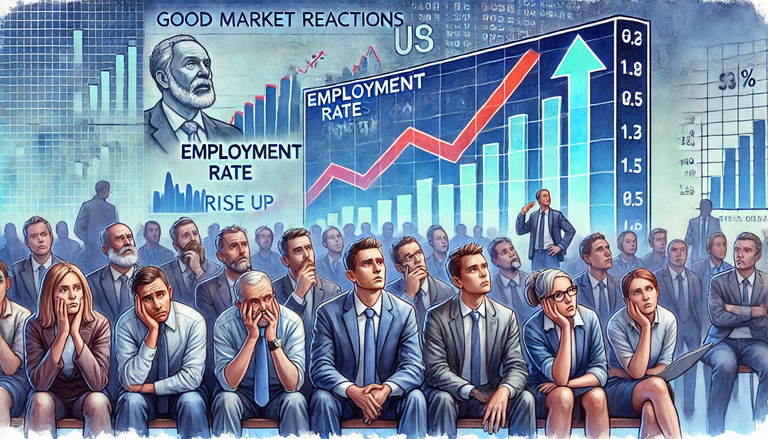In the world of investing, we often encounter situations that seem counterintuitive at first glance. One such phenomenon is the "Good News-Bad News" paradox, where positive economic indicators can lead to market downturns, and vice versa. As investors, understanding this dynamic is crucial for making informed decisions in today's complex financial landscape.

Good News is Bad News?
The Shifting Paradigm
Traditionally, we expect good economic news to boost markets and bad news to depress them. However, in recent years, this relationship has become more nuanced and, at times, completely inverted. The key to understanding this shift lies in the market's intense focus on monetary policy, particularly the actions of central banks like the Federal Reserve.
The Fed's Influence
Since the 2008 financial crisis, the Federal Reserve has played an outsized role in market dynamics. Investors have come to rely on what's known as the "Fed Put" – the expectation that the central bank will intervene with supportive policies during economic downturns. This reliance has created a peculiar market psychology where bad economic news can be seen as positive for asset prices.
The Inflation Factor
The COVID-19 pandemic and subsequent economic recovery have added another layer of complexity to this dynamic. As inflation surged in 2021 and 2022, the Fed's focus shifted to combating rising prices through interest rate hikes. This shift has once again flipped the script on how markets interpret economic data.
Interpreting Market Reactions
To make sense of these market reactions, we can use a simple framework:
- "Good news is good news": When positive economic data aligns with market expectations and doesn't threaten monetary policy.
- "Bad news is good news": When negative economic data suggests potential easing of monetary policy.
- "Good news is bad news": When positive economic data raises fears of tighter monetary policy.
- "Bad news is bad news": When negative economic data aligns with deteriorating market conditions.
Recent Market Behavior
In 2023 and early 2024, we've seen this framework in action. Strong economic data often led to market declines as investors feared continued interest rate hikes. Conversely, signs of economic weakness were sometimes met with market rallies as hopes for rate cuts increased.
However, by mid-2024, this dynamic began to shift. Markets started to react more positively to good economic news, suggesting a potential return to a more traditional relationship between economic data and market performance.
Implications for Investors
Understanding this paradox has several important implications for investors:
- Context is key: Always consider the broader economic environment when interpreting market reactions to news.
- Look beyond headlines: Dig deeper into economic reports to understand their potential policy implications.
- Stay flexible: Be prepared to adapt your investment strategy as market dynamics evolve.
- Long-term perspective: Remember that while these short-term reactions can create volatility, long-term market performance is still fundamentally tied to economic realities and corporate performance.
The Road Ahead
As we move forward, it's likely that the relationship between economic news and market reactions will continue to evolve. The Federal Reserve's ongoing efforts to balance inflation control with economic growth will play a crucial role in shaping this dynamic.
While the "Good News-Bad News" paradox can create short-term challenges and volatility, it also presents opportunities for savvy investors. By staying informed, maintaining a long-term perspective, and remaining adaptable, we can navigate these complex market conditions and work towards our investment goals.